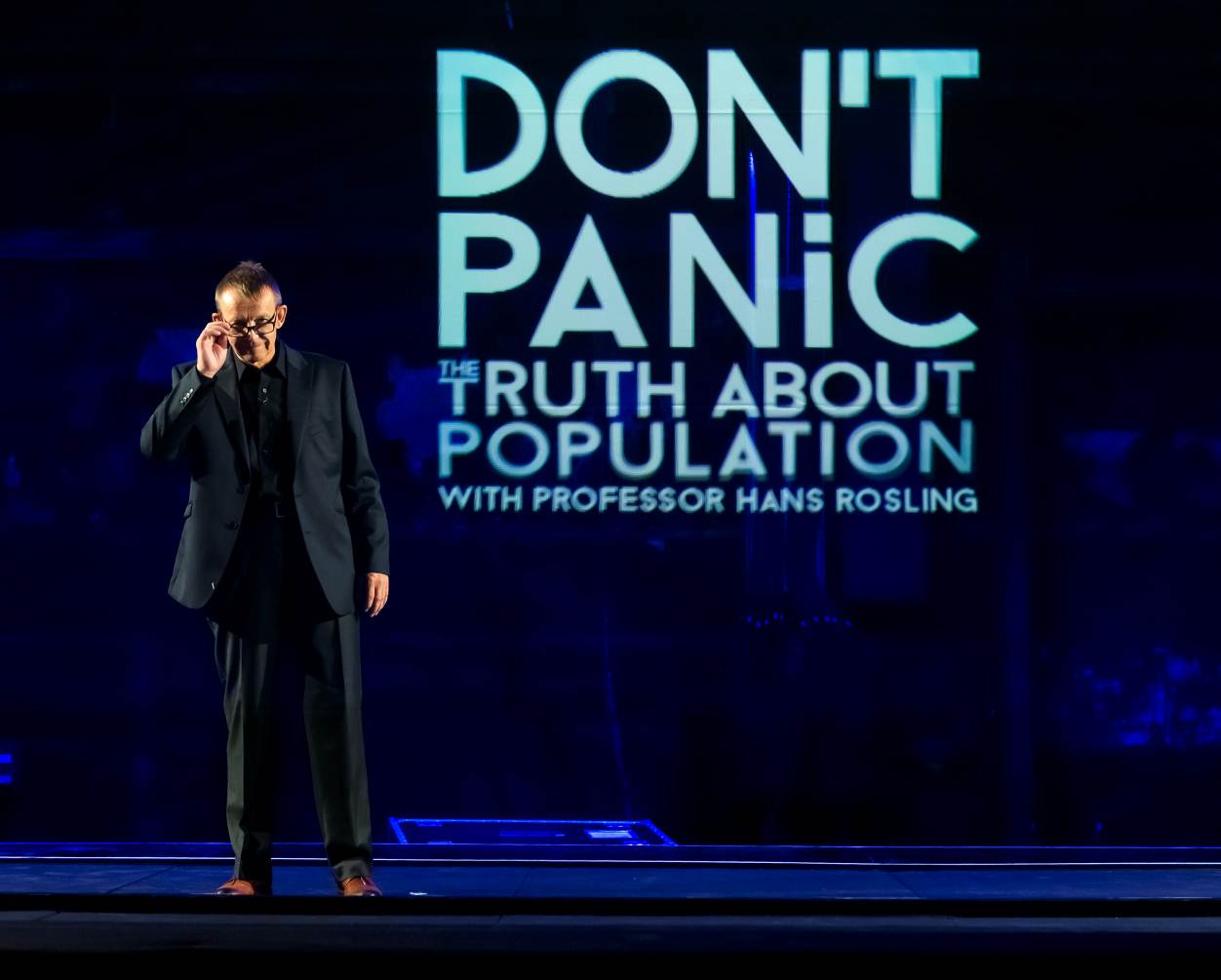“We live in a world of relentless change. Huge migrations of people to new mega-cities filling soaring skyscrapers and vast slums, ravenous appetites for fuel and food, unpredictable climate change… and all this in a world where the population is still growing. Should we be worried, should we be scared, and how to make sense of it all?“
With these exact words Hans Rosling starts the documentary and prepares the viewer for an incredible journey. In the 59 minutes that follows, important data regarding population growth, income distribution, family size and projections of the future are discussed in a fun and interactive way.
With immense charisma and funny jokes Hans Rosling manages to convey complex information while engaging viewers at the same time. Moreover, the support of graphic technologies enabled the projection of data, which facilitates enormously the understanding of the research findings and certainly makes it much more interesting to watch.
What Should All Marketers Watch It?
Every semester I show and discuss this documentary during my “Consumer Behavior” classes. Often one the main challenges is to broaden the scope of students. Having a clearer world view provides a much stronger base for finding solutions and understanding behaviour.
And this is critical for marketers.
So I find it that watching “Don’t Panic – The Truth About Population” contributes greatly to the development of a more critical “macro” view on the environment that impacts consumers.
The documentary reveals brilliant insights, which can be used for multiple marketing purposes. Here are just a few short examples:
- Family sizes: Family sizes explain much regarding human behavior. The documentary reveals the drastic reduction in family sizes all around the world during the past decades. This, alone, is a strong indicator for the behavior of millennial and parent purchase habits. Family sizes affects judgement and decision-making, which directly impacts consumption of various forms.
- Demographic growth: In 2015 we reached a population size of 7 billion people and (without considering any strong moderating factor such as wars or epidemic), according to the data shown, we are expected to reach 11 billion by 2100. This incredible growth will also have a deep impact on markets and developments of new consumer needs.
- Population distribution: In 2015 the current population distribution in the world (or “code of the world”, as Rosling called it) was 1114: One billion of people in the Americas, Europe and Africa and four in Asia+Oceania. In 2100 the projections are that the code will change to 1145, with Africa gaining 3 more billion and Asia+Oceania gaining one billion more.
These are only three quick important insights. The documentary discusses many more, including income distribution and development, birth mortality, energy consumption and pollution, as consequence of population growth.
All of these factors will impact the world, raising opportunities, but also extreme challenges globally. And many solutions can and should come from marketing environments, focused on addressing global issues impacting millions of people.
In other words: This documentary is a MUST WATCH.
And HERE IT IS: WATCH BELOW the documentary shared by the Gapminder Foundation (founded by Hans Rosling).
Who Was Hans Rosling?
Hans Rosling was a Swedish academic and researcher (1948-2017). He was a Professor of International Health at Karolinska Institute, developed incredible research on public health in Africa for nearly two decades and also founded GapMinder, a foundation respected globally for their immense contribution.
His main work focused on public health and the understanding of population developments around the world, diseases such as HIV and family behavior. Hans had an incredible capacity to communicate and through his charisma and humor, captivated audiences and managed to deliver complex messages very easily.
A true communicator with a brilliant mind.
The video below shows the life of the researcher and shows a much closer look into his life.
In early 2017 Hans Rosling unfortunately passed away after battling with pancreatic cancer for a year. But his ideas and contribution to science and the understanding of population growth will never be forgotten.
Conclusion
One of the main aspects I try to trigger in my students is to develop critical thinking, to think beyond the obvious. Solutions and ideas for marketers do not come only from specific marketing books. Solutions are everywhere, so it is extremely important to notice the world and understand the environment we live in.
Our environment reveals much about us, how we have behaved and what most likely we will do. Although Hans Rosling was a specialist in public health, his contributions crossed boarders of knowledge and allowed many areas of science to see their field of study differently by understanding the development of population.
And marketing is no different.





